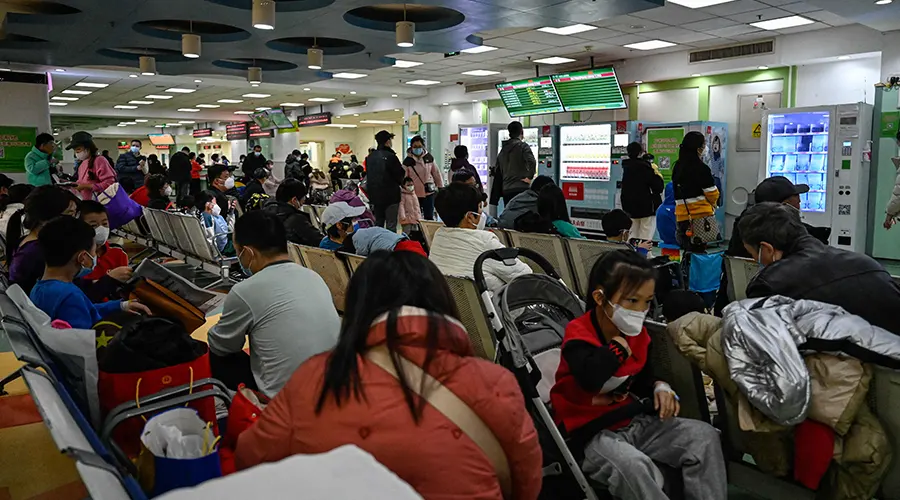Pneumonia in China
As China experiences its first winter without strict COVID-19 restrictions since the outbreak of the pandemic three years ago, a wave of respiratory illnesses is sweeping across the country.
The unusual rise in cases has prompted the World Health Organization (WHO) to prod China for additional information on the outbreak and seek enhanced response measures.
Although the cause of this trend is unclear, some health experts are attributing it to a common and temporary aftereffect of lifting lockdown restrictions, even as unanswered questions around the infections and the country of their spread have led others to draw parallels with the early days of the pandemic.
What do we know about China’s pneumonia outbreak so far?
- On November 13, China’s National Health Commission reported an increase in respiratory diseases at a press conference.
- On Sunday, clusters of undiagnosed pneumonia in children in northern China were reported by the Program for Monitoring Emerging Diseases (ProMED), a surveillance system that conducts global reporting of infectious disease outbreaks. It is unclear if this report overlapped with the press conference information.
- According to the ProMED report, infections have proliferated in Beijing and the city of Liaoning in the country’s northeast, which are 800km (500 miles) apart.
- On Wednesday, the WHO asked China to release information on the recent outbreak, including “additional epidemiologic and clinical information, as well as laboratory results from these reported clusters among children”.
- Although official figures on the number of cases are not available yet, hospitals in Beijing have witnessed a surge in patients, especially in the children’s wards. “One major hospital in the city has reported that on average every day, they are seeing about 1,200 patients enter their emergency room,” Al Jazeera correspondent Katrina Yu reported from Beijing on Thursday.
- Schools in Beijing are also reporting high levels of absenteeism, even dismissing entire classes for at least a week if some students are ill and warning parents to be extra cautious, Yu said.
- Health officials are also worried that winter will exacerbate the spread of the infections after a warning from China’s national weather authority that, starting on Thursday, the country’s cold temperatures will plunge even further.
WHO's response
On November 22, WHO released a statement requesting Chinese officials to share detailed information about the clusters of pneumonia in children.
According to WHO, the Chinese authorities have attributed this outbreak to the lifting of Covid-19 restrictions. Also, the circulation of known pathogens such as influenza, mycoplasma pneumoniae (a common bacterial infection which typically affects younger children), respiratory syncytial virus (RSV), and SARS-CoV-2 (the virus that causes COVID-19).
WHO has also asked the authorities to strengthen the capacity of the health system to manage patients.
Guidelines from WHO that people in China should follow to reduce the risk of respiratory illness:
- Timely vaccination
- Keep distance from people who are ill
- Practice self-isolation when sick
- Get necessary testing and medical help on time
- Wear masks in public places
- Wash hands regularly
It is too early for experts to predict a pandemic. However, the implementation of all necessary steps is crucial to stop any further spread of this outbreak in China.


Comments (0)